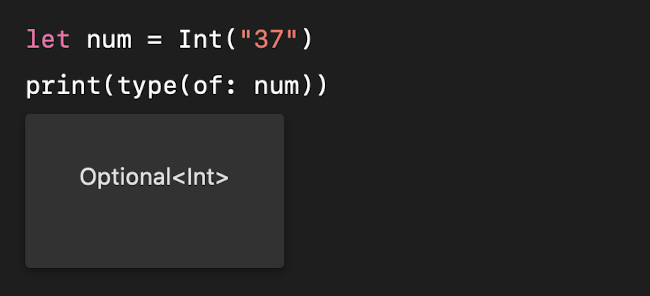Swift Optionals and `nil`
New Courses Coming Soon
Join the waiting lists
This tutorial belongs to the Swift series
Optionals are one key feature of Swift.
When you don’t know if a value will be present or absent, you declare the type as an optional.
The optional wraps another value, with its own type. Or maybe not.
We declare an optional adding a question mark after its type, like this:
var value: Int? = 10
Now value is not an Int value. It’s an optional wrapping an Int value.
To find out if the optional wraps a value, you must unwrap it.
We do so using an exclamation mark:
var value: Int? = 10
print(value!) //10
Swift methods often return an optional. For example the Int type initializer accepts a string, and returns an Int optional:

This is because it does not know if the string can be converted to a number.
If the optional does not contain a value, it evaluates as nil, and you cannot unwrap it:

nil is a special value that cannot be assigned to a variable. Only to an optional:


You typically use if statements to unwrap values in your code, like this:
var value: Int? = 2
if let age = value {
print(age)
}
Here is how can I help you:
- COURSES where I teach everything I know
- CODING BOOTCAMP cohort course - next edition in 2025
- BOOKS 16 coding ebooks you can download for free on JS Python C PHP and lots more
- Follow me on X